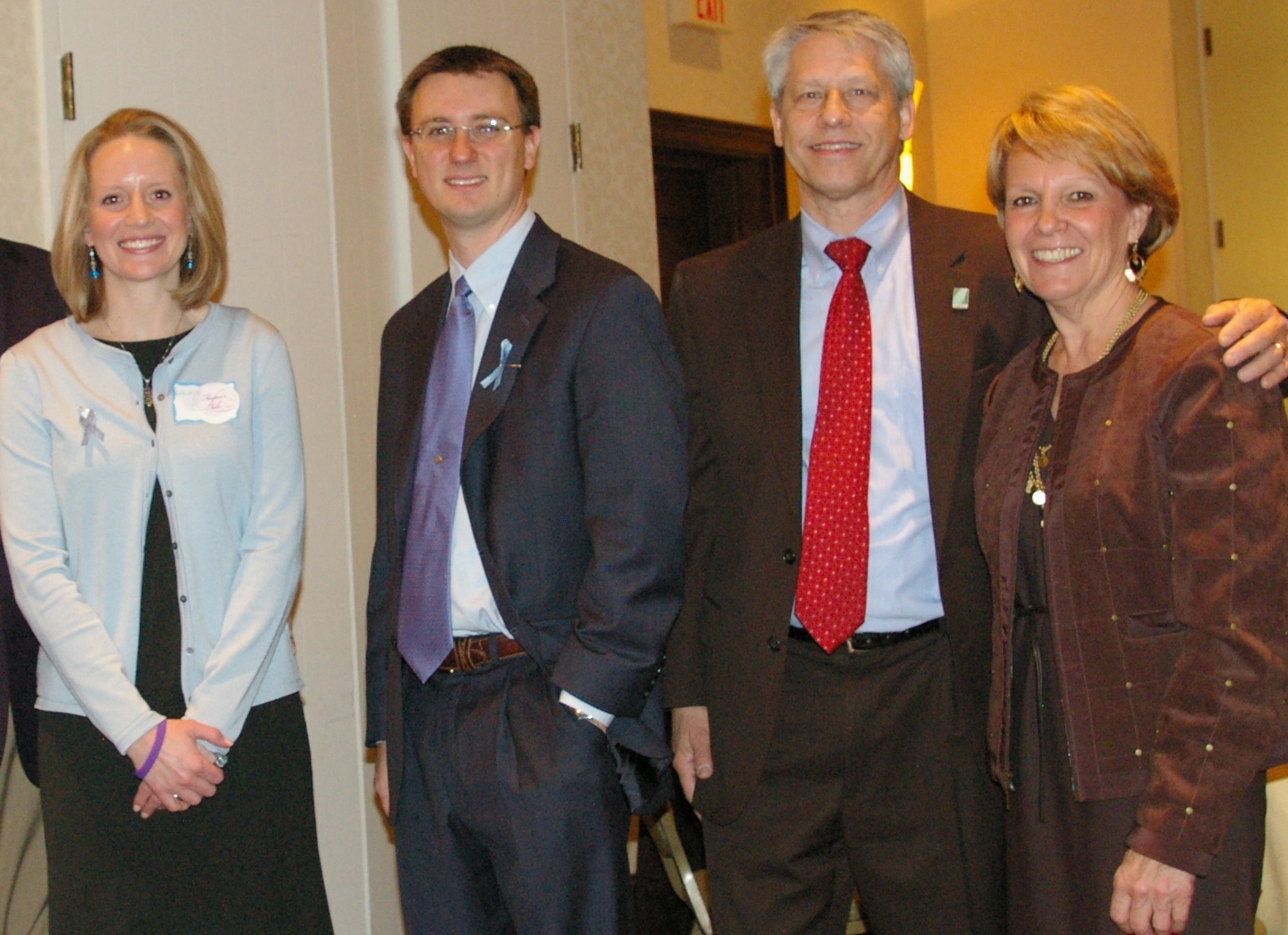This morning, about 80 people joined Taylor’s Tale as we recognized World Rare Disease Day and made an exciting announcement about the fight against Batten disease.
I shared our family’s journey and introduced our featured guest. Following is a modified version of my comments.
My “little” sister is 14. We’re the same height.
But I still remember the day she came home from the hospital. I raced my then-best friend and now-husband up the stairs to peer over her crib (he got there first).
I remember how my sister learned to read as a toddler.
I remember 5-year-old Taylor. She seemed perfect. Beautiful. Intelligent. Healthy. Spunky. She kept our brother on his toes. The world – and Stephen – were hers to conquer.
But 6-year-old Taylor couldn’t handle first grade math. Addition and subtraction left her in tears.
Seven-year-old Taylor couldn’t find her way in dim places.
Just three weeks before my sister’s eighth birthday, a monster called Batten disease burst into our world and shattered it into a thousand little pieces.
Batten disease is a rare, inherited disorder that affects mainly children. To get it, kids have to inherit a “bad copy” of the gene from each of their parents. I got one good copy and one bad copy, so I’m a carrier; that means that I’m healthy but could pass the gene on to my children. My brother is a carrier, too.
Taylor got two bad copies.
With one roll of the genetic dice, our little sister got a fatal disease.
Fourteen-year-old Taylor lives in a world that’s always dark. She can’t learn like other kids. She has seizures. She loves to sing, but soon, Batten disease will steal her speech. Even now, she only has a few words. I can ask my sister if she had a good day at school, but we can’t talk about it.
Taylor ran two 5K races with the help of a sighted running buddy through the Girls on the Run program at her school. But that was four long years ago. Soon, my sister will be in a wheelchair.
Batten disease steals the lives of children.
It upsets the natural order of things.
Children aren’t supposed to have their dreams snatched away from them by a monster like Batten disease.
They aren’t supposed to die.
Taylor was diagnosed with infantile Batten disease on July 24, 2006.
I still remember the long moment we all shared in the floor of my parents’ dark bedroom; wrapped in each others’ arms; soaked in each others’ tears.
The doctor who delivered that news told my parents to take her home and make happy memories.
We don’t have anything against happy memories. But while Batten disease is in our DNA, going down without a fight is NOT.
Every day with Batten disease is a hard day. Still, in the near-seven years since the day our lives changed forever, we followed the doctor’s orders. We made our fair share of happy memories.
But we made time for fighting, too.
With the help of good friends, we founded a non-profit organization. We raised nearly half a million dollars for potentially life-saving research and promoted awareness of Batten disease. We advocated for increased support for the rare disease community.
We partnered with other groups that share our mission; American organizations such as the Batten Disease Support & Research Association and EveryLife Foundation for Rare Diseases, and international organizations such as the Global Genes Project.
And along the way, we met MANY families like ours.
One in 10 Americans suffers from a rare disease.
Chances are, you know someone fighting his or her own battle.
To borrow words from my mom, diseases like Batten are rare…but hope should not be.
That’s why I’m pleased to share reason for new hope with you today.
On behalf of Taylor’s Tale, I’m excited to announce that we’ve joined an international coalition of organizations founded by families like ours – families that refused to go down without a fight.
Together, we’ll fund gene therapy for two forms of Batten disease. This revolutionary work will take place right here in our home state at the University of North Carolina at Chapel Hill. The goal of this study is to pave the way for a human clinical trial.
I’ve watched this disease try to rob Taylor of EVERYTHING. I’ve prepared myself for the reality that I will likely outlive my little sister.
Bottom line – I HATE Batten disease. But in seven difficult, painful years, I’ve witnessed great progress. I’ve NEVER stopped believing.
And I believe in the ability of THIS project at UNC to help save the lives of children like Taylor.
Its leader is an expert in AAV vector design and gene therapy. He graduated from Auburn University and earned a PhD from Vanderbilt University. He completed a postdoctoral fellowship at UNC, specializing in central nervous system gene therapy. His work focuses on the development of treatments for neurological diseases. He’s been published in multiple journals and mentioned in high-profile publications and blogs. His work is chronicled on the pages of a 2012 book that explores gene therapy as the next frontier through the stories of real patients and families. The doors of his lab are decorated with photos of the children for whom he and his colleagues go to work every day.
The leader of the Global Gene Transfer for Batten Disease project is Steven Gray, PhD.
To learn more about this exciting initiative, click here.

